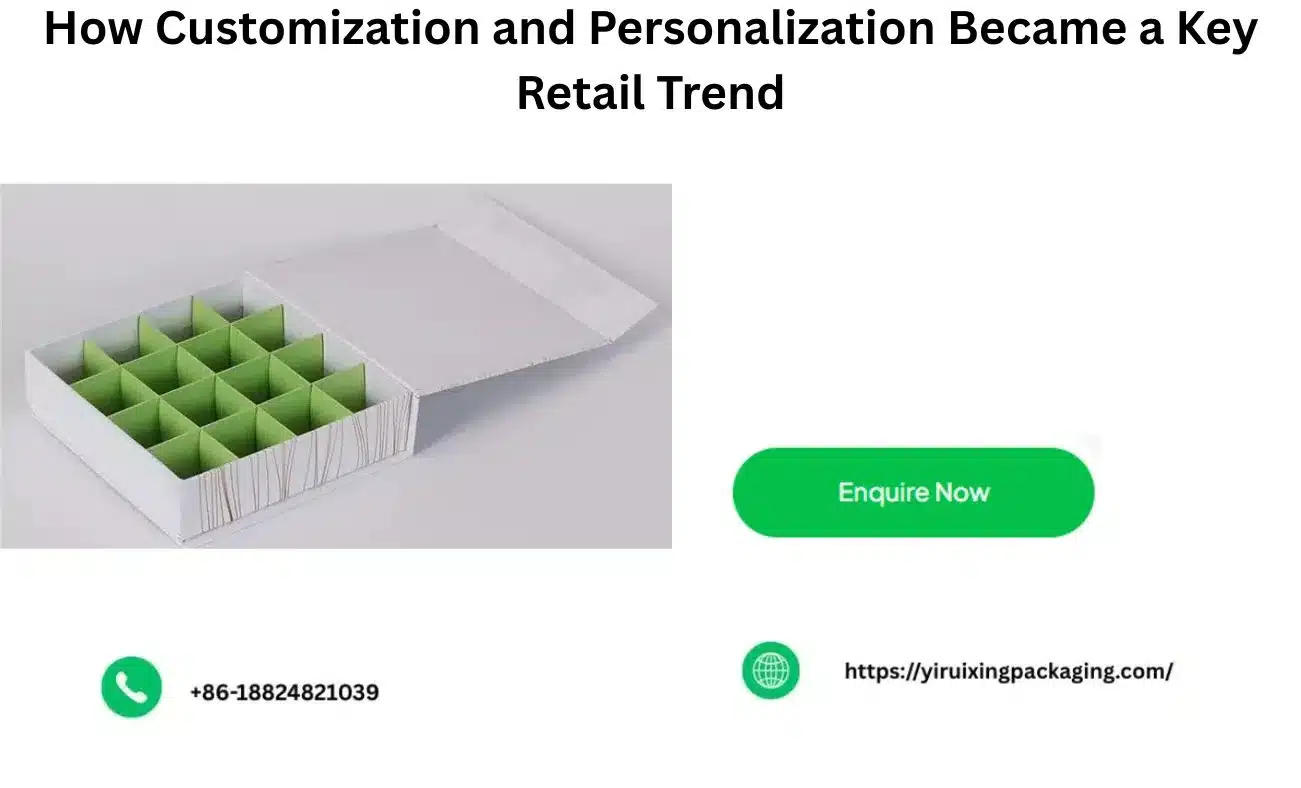In today’s retail world, customers no longer accept things that feel generic–be it a physical product or how the service is delivered. They want something made just for them: you can change the way a product looks, vary its packaging and offer more features than with standard brand goods. In this blog, we provide you with how customization and personalization became a key retail trend.
Table of Contents
ToggleHere are the steps:
1. From One-Size-Fits-All to Individual Needs
The products that shops once stocked fit everybody. But brands soon found that, as online shopping grew, they not only could but should know what each customer wanted. Data and personalization became the tools to understand what people like by browsing history, buying records and behaviour. That leads to more accurate product recommendations, personally tailored offers, and getting closer to shoppers.
Customers Say Personalization Matters. Fresh statistics show that over 70% of shoppers said they would be more likely to buy further products from companies that knew their individual stuff. This is a clear signal: shoppers expect personalization as part of the service when they shop online; it’s not an add-on.
2. Technology as the Driver
What drove the development of personalization? The answer is technology, which includes AI, machine learning, and data systems
- Nowadays, retailers are more active and use real-time data, AI-driven predictive analytics, and cloud tools to know what customers really want,
- Scales are even larger now that advanced AI tools such as generative models and recommendation engines are being used to personalize marketing, from not only products that make up your basket but even the whole ad.
- Bricks-and-mortar retailers are experimenting with body scanners, in-store apps and AI to offer real-time customizations.
Personalization isn’t just a luxury; it is everywhere. People take it for granted and expect it.
3. Packaging as a Key Personalization Tool
Among the most powerful custom content tools today is packaging. When a customer sees a product’s packaging, they are experiencing the authority of a pristine branding moment. Retailers now use custom packaging to create a memorable unboxing experience and even give it away as a gift box. This is where Yiruixing Packaging stands out. As a leading manufacturer of rigid packaging, Yiruixing Packaging offers dedicated packaging solutions for fine wines, jewelry retail outlets and gift shops with stored wines to order wares. The company’s limited range of packaging styles is infinitely larger when combined with a variety of surface finishes, such as foil stamping and embossing onto eco-friendly materials. This helps brands make each hit feel like an unwitting alliance–this is with social media that can change fortunes.
4. Retailers Leaning into ‘Mass Customization’
So “mass customization” is a way to cross the divide between large-scale products and personalization. It implies creating products that have their own particular feel— even if they’re manufactured by the million. There are different tactics:
- Collaborative customization, where the customer helps to design their product (think: choose-your-own colour or style).
- Adaptive customization, where the final product can be adjusted by the user.
- And others which provide gentle, graded personalization without making it complicated.
Such strategies mean that the item can still be personalized to suit the customer’s individual tastes without sacrificing production efficiency.
5. The Role of Retailers and Marketplaces
Even big companies are now fully embracing personalization. For example:
- Etsy and eBay are pushing to make the shopping feed of these platforms more “social-media-like” by using artificial intelligence to surface items that fit each user’s interests.
- Many retailers now claim that personalization is one of the top reasons, just replaced by making shopping easier for customers and reaching new ones with digital technology, that they invest in new tech.
6. Ethical and Privacy Considerations
Great people often find themselves in great responsibility. What they care most about is how their data is used in an age of transparency and fairness.
- Most people are now distrustful of multinational companies. Studies show many consumers worry about data privacy and algorithmic bias in AI systems.
- Brands have to learn how to do responsible AI: be transparent, review systems, protect data and guarantee fairness.
Balanced personalization – that which respects privacy while delivering immersive experiences – is the future of retail.
FAQs
What’s the difference between customization and personalization?
Here we provide you with the difference:
- Customization means users are designing or directly selecting aspects of a product (e.g., colours or adding text).
- Personalization uses data to tailor experiences or make recommendations to individuals without the need for them to take an active part in its design
Why is personalization so important in retail today?
It promotes customer loyalty. When shoppers can find what they need at first glance and say “that speaks directly to me”, not only unboxes monthly purchases but also leads people on are In conclusion, customers turn into repeat purchases.
How does personalized packaging benefit brands?
It grows brand image, provides an unforgettable unboxing experience, sets off pleasurable associations, and in many cases, overcomes inefficient sales means efficient ones.
How does Yiruixing Packaging relate to this trend?
Yiruixing Packaging is a manufacturer of rigid boxes. Its products illustrate this phenomenon in packaging; they offer quality, customizable boxes for businesses lucky enough to be customers. When their job is done, some people will come back for more custom printed box orders–one day, partnerships may even develop between multinational bourses.





